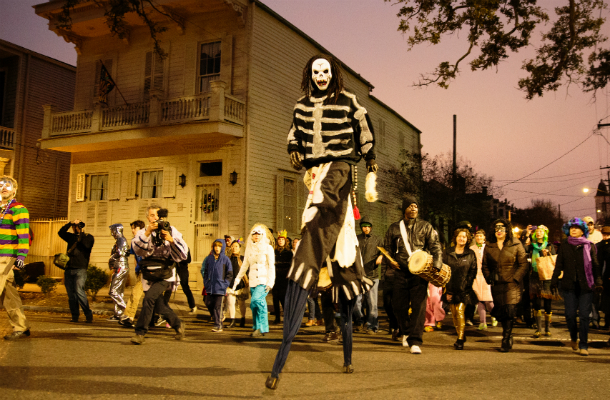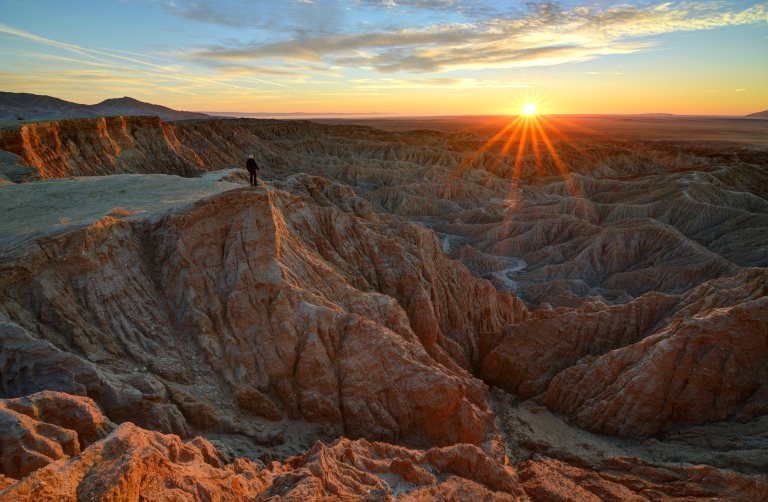Is New Orleans Safe? 4 Essential Travel Safety Tips
Along with letting the good times roll, New Orleans has a reputation for being dangerous. Local Joe Furey explains the realities of crime in the Big Easy and shares his tips on staying safe during Mardi Gras.
 Photo © Brian Rapsey
Photo © Brian Rapsey
- Crime and scams in New Orleans
- Best neighborhoods to base yourself
- Safety during Mardi Gras
- Getting around New Orleans
Mardi Gras will soon be upon us in New Orleans. COVID-19 put a stop to it in 2021, something that even Hurricane Katrina couldn’t do, but “the greatest free show on earth” is back, and in 2024 it happens on February 13.
We’re undaunted. Not only have we been throwing this party – in more or less its current form – for 165 years, but we’re up to our ears in festivities for more than a month: although the date of Mardi Gras Day changes each year because it is tied to Easter, carnival season, of which it is the grand finale, starts on the same date each year, January 6 (aka Twelfth Night, aka Epiphany).
As Mardi Gras is really just everyday New Orleans writ large (okay, not just “large”, but in mile-high neon letters), it strikes me that now might be a sensible time to go over the measures you can take to improve your chances of having the best – that is, safest – time there possible.
Unlike New York and Chicago, the Crescent City genuinely never sleeps and there’s really no low season, thus the dangers posed by Mardi Gras are present to some degree all year long. Take just a little care, however, and they need not affect you.
Crime and scams in New Orleans
According to figures published in 2021 by Statista, New Orleans was America’s ninth most violent city. As of 2023 it was no longer in Statista's top 10, but I’m not going to play down the risks. I’ve been carjacked, shot at, and held up, but I live in Hollygrove, Lil Wayne’s old hood, and that is assuredly not tourist territory. Serious crime of the kind I’ve experienced is, generally, highly localized, and I’d put it under the heading “turf war crossfire”.
Crime in those districts where hospitality is king (the French Quarter, the Central Business District, Faubourg Maringy, and Freret, where visitors routinely lose control of their faculties) and in the neighborhoods close by (Bywater, the Garden Districts, Treme, and Uptown, where they can be found fumbling with keys to their Airbnbs) tends to be opportunistic. These are mostly crowded areas, even late at night, so just make sure you don’t present an easy target – a thief will only strike if they believe they can boost your wallet, phone, or key quickly. It’s a muggers’ market – prospective victims are ten a penny.
The Quarter is known for its scammers. For the most part, they are color artists, part of the city’s frayed fabric, trying the same old ruses on the same old rubes, and if you decline to play along you won’t upset anyone. But don’t take short cuts across empty lots or down alleyways, as you’ll find a different class of “artist” there, and you’d be advised to do what they ask.
In such cases, you’ll wish that you had given some thought as to the distribution of your cash and credit/debit cards between your room, your wallet, and your person. I keep a dead card and just enough money (USD $50) in my wallet to make stealing it look like a result and a reason to run. And I keep an active card in a plastic folder in my shoe, or a covert money belt.
Phones are much harder to protect. Thieves sweep bar surfaces out of habit – so if you’re out in company, and likely to be intoxicated at some point, think about keeping yours safely tucked away at your lodging or on your person: drunk photos are rarely works of art, after all. In the Quarter, you’ll be asked for proof of ID – foreigners should take a photocopy of their passport.
Best neighborhoods to base yourself
Preparing for the worst is no way to have a good time, though. Preparing for the best is. Which starts with a base – a place where you can get away from it all if you need to and get into something else should you want. I can recommend a neighborhood northwest of the Quarter bordered by Esplanade and Tulane Avenues, and Broad and Carrolton Streets: Mid-City. It has City Park, an arthouse cinema, the New Orleans Museum of Art, the Fairgrounds racetrack (where Jazz Fest will be held over two weekends in 2022, April 29 to 1 May and 5 to 8 May), plenty of well-regarded bars and restaurants, and is safely walkable till quite late, with very few opportunities to make wrong turns.
East of the Quarter, the latter half of Bywater (from Franklin to Poland Avenue, between Chartres and North Rampart Streets) warrants more than a mention. A hipster’s paradise on one hand, a genuine survivor of old New Orleans on the other, it has more in the way of shotgun architecture, street art, good coffee, antiques stores, and creatives’ spaces than you can shake a stick at, and it has Crescent Park, with its peerless views of the cityscape and the Mississippi, too.
Safety during Mardi Gras
The carnival season really gets going from January 19 in 2024, with parades in the Quarter, Mid-City, and Uptown happening almost daily. Some parade routes were shortened in 2022 but have been restored, thanks to assistance from neighboring police jurisdictions. But don't let your guard down too much. Fancy dress, which is widely worn during Mardi Gras, gives criminals the opportunity to hide in plain sight, and can make them bolder.
While watching the parades, where there are no barricades, don’t be tempted to wander. In 2020, two people were killed after being run over by a tandem float.
Getting Around New Orleans
For an American city, New Orleans is European-compact and walkable in those areas where it is safe to do so. Laid out for the most part in a grid system, it’s also easily navigable. As for trains and buses, Amtrak and Greyhound occupy the same station, a 15-minute stroll from the Quarter and CBD, and you’ll find taxis idling outside.
From Louis Armstrong airport, you can get a taxi (I usually offer to share one with one or two people), book an Uber or use the Flymsy shuttle service if you’re in no hurry and don’t have a lot of luggage. Ubers are plentiful, but taxis are considerably cheaper at times of peak demand (read: all carnival season).
For those with a soul, a short hop on a classic streetcar – there are four lines, all originating downtown – is about as essential as public transport gets. And there’s a bike-share scheme if you want to take advantage of the city’s 100mi (160km) of bike lanes and greenways.
Related articles
Simple and flexible travel insurance
You can buy at home or while traveling, and claim online from anywhere in the world. With 150+ adventure activities covered and 24/7 emergency assistance.
Get a quote
No Comments